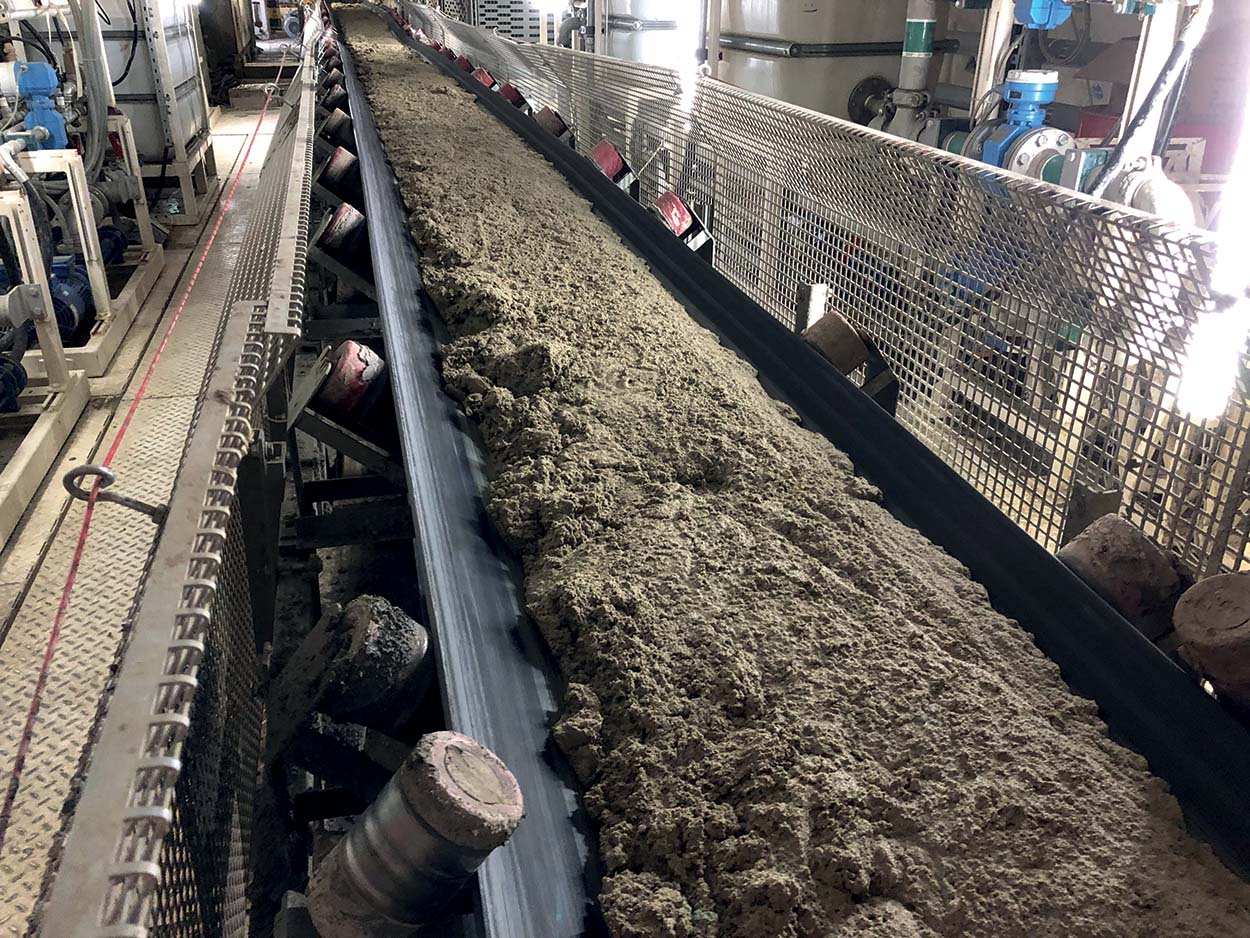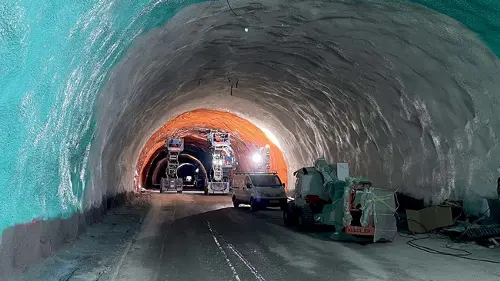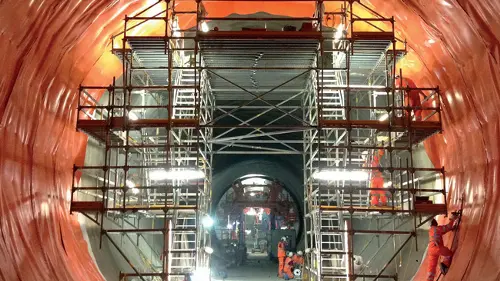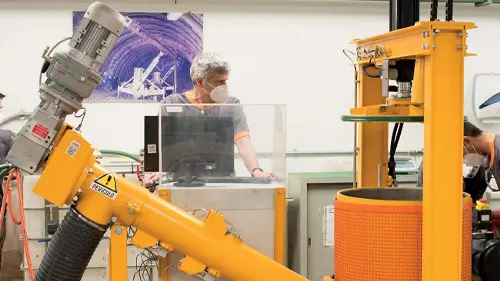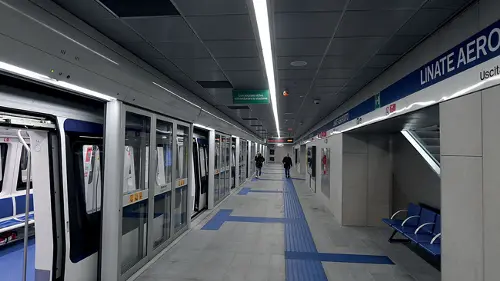
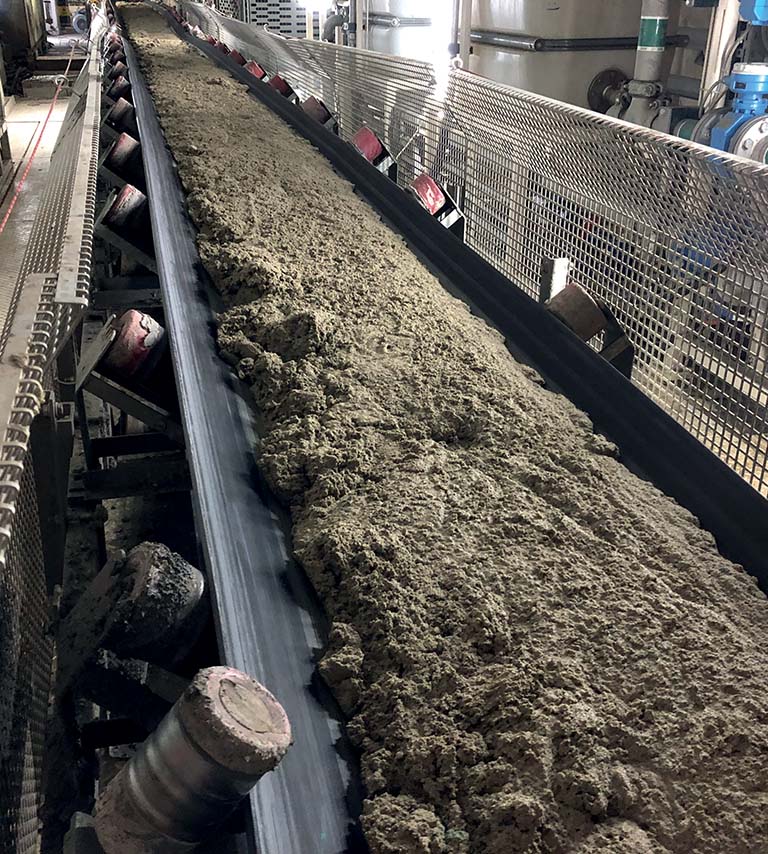
Polyfoamer Eco Line
Soil conditioning admixtures combine technical and environmental performances during EPB-TBM works.
Soil conditioning admixtures combine technical and environmental performances during EPB-TBM works.
“Sustainable conditioning”
The importance of a rapid and safe advance rate with EPB (Earth Pressure Balance)-type TBMs (Tunnel Boring Machines) is well known to the whole of the global tunnelling industry. Less well known however, or certainly less discussed in the literature available, are the issues regarding the environmental impact of admixtures used to condition excavated soil. In fact, chemical products added to the soil during tunnelling inevitably have a certain degree of impact on both soilwater and on the soil excavated.
Even at low concentrations many chemical substances can trigger harmful changes to the chemical balance in the soil, but it is also true that, with the quantities generated during the tunnelling process (for instance, with a 40 km tunnel an estimated 2.5-3.0 million m3 of excavated material would be produced), even substances considered generally as low contaminants could have quite a heavy environmental impact with negative effects on the survival and/or reproduction cycle of organisms. When considering products with similar performance properties, the level of impact they have on the environment depends on the chemical formulation of the conditioning agents. Over the years a number of innovative products have been developed and the aim of this article is to illustrate how the performance balance between technical and environmental considerations has been improved.
“Sustainable conditioning” means:
- reducing environmental impact without negatively impacting tunnelling performance;
- avoiding having to treat conditioned material as waste;
- avoiding costs associated with the disposal of the material;
- reusing excavated material, thereby accelerating its transportation to the site where it will be definitively deposited.
The importance of conditioning soil from a technical perspective
Soil conditioning is a “key factor” for a rapid, safe advance rate of a TBM,
and has a significant influence on the overall performance of a TBM and on the entire project. The actual cost of conditioning agents is minimal when compared with the total cost of a project, but their impact can be enormous, in that the quality of these products has a very high influence on TBM performance
: advance rate, reduction in downtimes
, wear to the cutting tools, energy consumption, etc.
The chemical product most commonly used for conditioning soil is a foaming agent which, when mixed with water and air, generates foam that is injected at the tunnelling front, into the TBM chamber and along the screw-type extraction conveyor, where it is mixed with the soil to “improve” its consistency. The desired effect of the foam depends on the soil excavated. In the case of granular soil, the foam needs to “aggregate” the soil, creating a plastic-consistency paste that can be used to apply EPB pressure at the tunnelling front and, where required, minimise the risk of “uncontrolled” ingress of water into the tunnelling chamber. In the case of cohesive soil or rock formations (clay, slate, etc.), conditioning serves to minimise the risk of clogging, or material sticking to the metal components of the machine which could then lead to slowing down tunnelling operations or even lengthy downtimes, with economic repercussions due to a loss in production, or safety issues.
Managing and handling conditioned soil
Adding a chemical product to soil as the EPB advances leads to a certain degree of impact on the environment: on soil water (if tunnelling is below the water table) and on the soil extracted (muck), which will contain a certain amount of the conditioning agent and will need to be transported away from site to a place where it can be definitively deposited. The degree of impact depends on the formulation of the conditioning agent : different foaming agents do not only lead to different performance properties, but also to different biodegradation rate and different levels of toxicity in the muck. How this material is classified (by-product or waste), and how long it can be stored on site has an enormous impact on the entire tunnelling project.
For around the last ten years, particular attention has been paid to how muck conditioned with foam is managed on Italian TBM tunnelling sites. This issue has been arousing growing interest all the world over.
Environmental tests on conditioned soil were carried out by internationally renowned institutes such as Polytecnico di Torino, CNR (Italian National Research Council) and the Mario Negri Institute of Pharmacological Research which have come to the same conclusion: muck needs to be temporarily stored on site for a certain period of time in large storage tanks until its impact on the environment due to adding the conditioning agent is either annulled or drops below a certain limit accepted by regulatory bodies. Only in that moment may the storage tanks be emptied and the muck transported to the site where it will be definitively deposited.
The checks that need to be carried out before emptying the storage tanks on site generally regard the following:
- The eco-toxicity of the muck: the conditioned soil may only be transported away from site when it is no longer toxic to certain organisms;
- The presence of surfactants in the muck or in the eluate they are in contact with: the conditioned soil may only be transported away when the concentration of surfactants is lower than a prescribed limit.
The size of the storage tanks on site needs to be calculated during the design phase and, as such, can significantly influence the project, in that the tunnelling advance rate depends on them. Besides, it is not always possible to have spacious storage tanks, especially when tunnelling in urban environments. So, this an important detail that could slow down TBM activity or even bring it to a halt while waiting for environmental parameters to be reached.
Products for conditioning soil sustainably
The use of a product with rapid degradation capacity and a low eco-toxicity index inevitably leads to a reduction in waiting times before the soil inside the storage tanks reaches the required environmental limits. To meet the need to optimise muck handling and management, Mapei Research has developed a series of innovative foaming agents: the POLYFOAMER ECO line
. These products are characterised by eco-toxicity indices, certified by independent laboratories, which are several orders of magnitude lower than traditional foaming agents. Site conditions can further increase these differences compared with those obtained under laboratory conditions. Degradation of the surfactant within the muck and its toxicity are influenced by numerous factors such as the surrounding temperature and humidity in the area where the storage tanks are located, unforeseen geological variations, variations in the amount of foam required for tunnelling, possible bacterial contamination, etc.
Products from the POLYFOAMER ECO line, such as POLYFOAMER ECO 100 and POLYFOAMER ECO 100 PLUS, have already been used in the construction of more than 40 km of tunnels, both in Italy and abroad, showing that “sustainable conditioning”, as explained previously, is becoming a concrete concept.
The development of these products has improved the balance between technical performance and environmental impact, clearly showing that it is possible to bore tunnels efficiently and, at the same time, optimise the handling and management of muck.
EPB-TMB
Earth Pressure Balance, or EPB, is a mechanized tunneling method in which the excavated material is used to support the tunnel face while it is being plasticised using foam/slurry & other admixtures to make it transportable and waterproof. The excavated material is transported into the Tunnel Boring Machine (TBM) via a screw conveyor which allows the pressure at the face of the TBM to remain balanced without the use of slurry.
EPB TBM are mainly designed for soft soils containing water under pressure. The EPB TBM can handle loose sedimentary deposits with large boulders and high water table. The excavated material is transported by a screw conveyor from the excavation chamber to the belt conveyor. The combination of the output of the screw conveyor and the advance rate of the TBM ensures that the support pressure in the excavation chamber can be exactly controlled.






